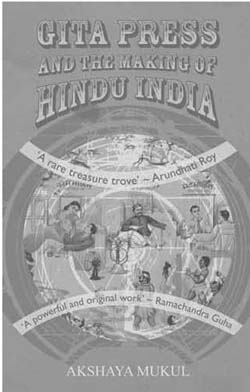In 1987, Doordarshan, the state-controlled television network, began to air Ramanand Sagar’s popular show based on the epic Ramayana. Its broadcast was a remarkable departure for a government institution like Doordarshan from the Nehruvian mandate to uphold a secular and modern character and eschew tradition, especially when invoked in the context of religion. The televisual retelling of the epic achieved unprecedented popularity.
Several scholars regard the telecast of Ramayana, and later Mahabharata, as a crucial moment in the resurgence of the Sangh Parivar’s Right Wing politics generally, and catalyst for the Ram Janmabhoomi Movement specifically. The larger promise of such politics was retrieval and restoration of a golden past, Ram Rajya, an idealized state of governance premised on conservative values, as depicted in the aforementioned television shows. Importantly, these developments took place in the throes of rapid liberalization of the economy, with the television shedding its development-oriented identity and assuming an aggressive consumption-oriented outlook to court the emerging middle-class.
Cut to 2014. The Bharatiya Janata Party (BJP), a constituent of the Sangh Parivar, mounted an intense mass media campaign in the run up to the sixteenth Lok Sabha elections to prop up its Prime Ministerial candidate Narendra Modi, widely thought to be an effective and pro-business administrator but seen by many as a divisive figure under whose watch Gujarat witnessed sharp communal polarization and violence against the minorities. Keen to play a larger role in national politics, Modi carefully sidestepped, without completely disavowing the staple issues of BJP’s loyal constituency, largely articulated within the rubric of Hindu Nationalism, and pitched himself as a leader who would ‘develop’ the country with ‘less government, more governance’, a euphemism, if there ever could be one, for brute neoliberalism. According to official declarations the Party spent upwards of Rs 700 Crores—unofficial estimates peg the expenses several times higher—on the high-tech campaign spanning traditional media like broadcast, print, outdoor and skilful and strategic mobilization of mobile and online media.
Flashback to 1923. Marwari businessmen and men of religion, Jaydayal Goyandka and Hanuman Prasad Poddar, establish Gita Press, a publishing venture which has sold almost 600 million books cumulatively over its 92 years of existence, almost 72 million of which have been copies of the Gita. Other than the Gita, the Press has also been publishing Ramayana, Mahabharata, Puranas, Upanishads, books outlining the shape of model society and duties expected of its ideal citizens, especially women, biographies of saints, and collections of devotional songs. Its remarkable success can be attributed to its ability to bring out cheap and well-produced books as well as the popularity of its monthly journals Kalyan and Kalyana-Kalpatru, published in Hindi and English, respectively, which have a combined circulation of 3,00,000 today.

